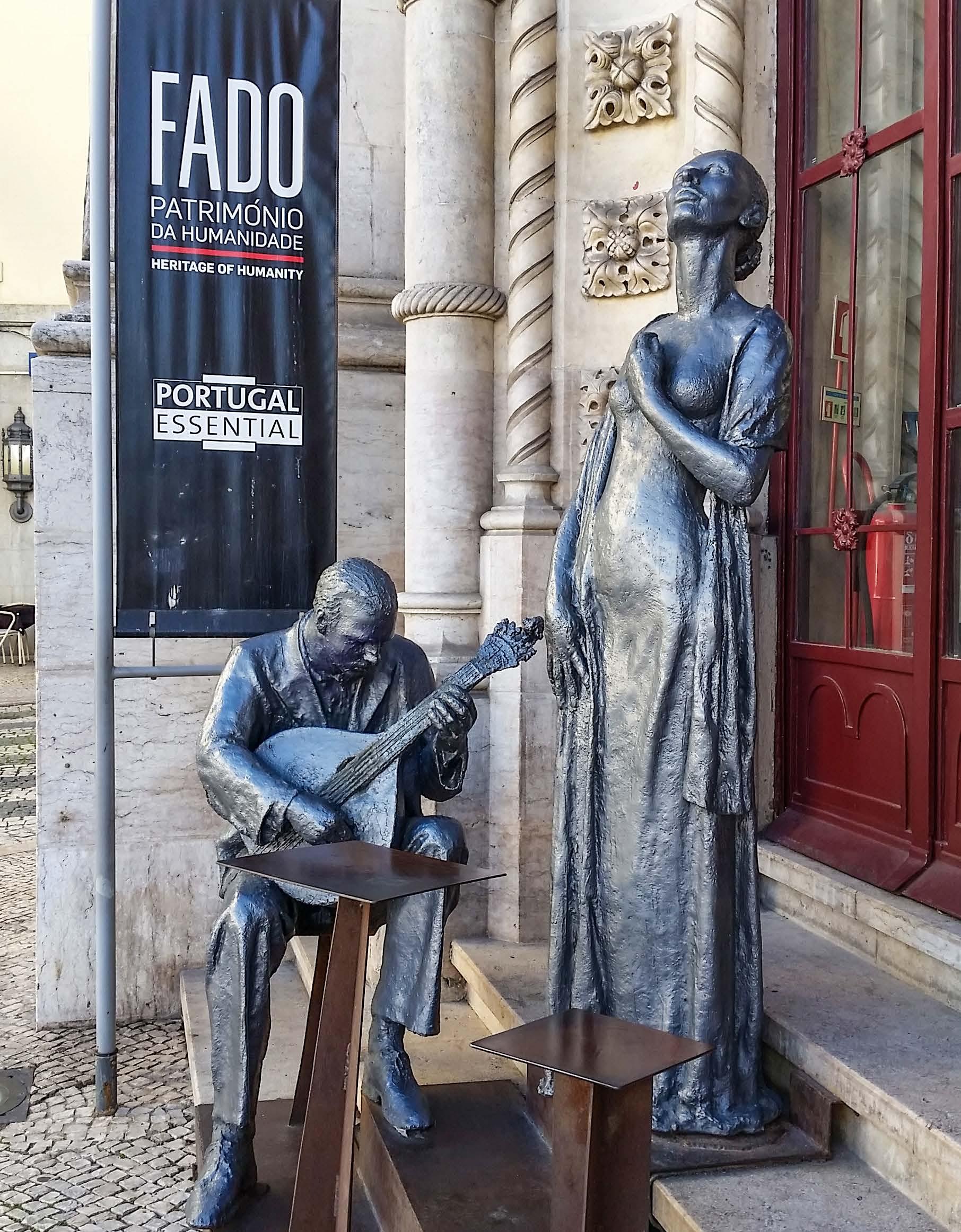
4 minute read
FADO: Lisbon’s Bittersweet Obsession
By Debra Smith
Portugal’s seafaring explorers shaped the destiny of many nations. The essence of a sailor’s lonely and perilous life is reflected in the heartfelt songs of fado, Lisbon’s music of the soul.
Under the domed stone ceilings of the O Faia restaurant in Lisbon, diners happily chat over meals of salted cod and beef tenderloin while glasses of green Portuguese wine sparkle in the candlelight. Slowly, the overhead lights dim, and a time-honoured announcement is heard: Silence; fado is about to be sung.

PORTUGUESE TRADITIONAL GUITAR
A hush falls over the bustling restaurant as Anita Guerreiro steps into the spotlight. Dressed in black, she slowly raises her head and begins to sing. She has no microphone. She is accompanied, in the traditional manner, by two guitar players, Fernando Silva, on a 12-string Portuguese guitar, and Paulo Ramos, on acoustic guitar. And also, by the audience – through their silence and appreciation, they become part of the performance. They lean in to listen to songs of love and laughter, sorrow and saudade (longing) and fado – fate and implacable destiny.
The origins of fado are as clouded as the smoke-filled bars of Lisbon where sailors came to drink away their sorrows during the Age of Exploration. From the 15th to the 18th centuries, Portuguese ships sailed to Africa searching for a route to India, to the North Atlantic for cod, and to China, Japan and the Americas for trade goods, until eventually, they circled the globe.

A KEYBOARD MADE OF STAIRS IN THE ALFAMA DISTRICT OF LISBON ©DEBRA SMITH
There are hints of the stories that were woven together through fado across Portugal at some of its most popular sites. In the rough and tumble alleyways of the Mouraria and Alfama districts near the harbour, the cultures of many countries blended with the lingering Islamic influences of the Arab occupation to produce a rich mélange of food, drink and music. The flat-backed Renaissance-era lute arrived with English wine and wool traders to become the teardrop-shaped Portuguese guitar. The first well-known fado singer or fadista, Maria Severa Onofriana, used it while singing her way from the streets to become the paramour of the Count of Vimioso before her early death in 1846.
Today, travellers will find tidy whitewashed buildings decked with hanging baskets of flowers and balconies draped with the washing as they walk down the twisted steps of hilly, picturesque Alfama. At the bottom of the hill, the Museo do Fado holds rare instruments and video recordings of fado stars.

LISBON AS SEEN FROM THE TURRETS OF THE CASTELO DE SAO JORGE ©DEBRA SMITH
Crowning the hilltop is the Castelo de Sao Jorge. This Moorish castle was captured by the first king of Portugal in 1147. Panoramic views of Lisbon and the Tagus River are worth the steep climb up the cobblestone streets. Eleven towers dot the ramparts and cork oak and olive trees shade the terraces and squares. Looking out, one can imagine the mothers and lovers of Portuguese sailors scanning the harbour from the towers reflected in the words of the song Fado Portuguese: “Fado was born on a day when the wind barely stirred... On the main rail of a sailing ship, in the heart of a seaman, while sorrowful he sang.” The agony of departure and the joy of arrival are both reflected in the songs of fado.
At the harbour, across from Jerónimos Monastery, the unique Belém Tower rises out of the waves. Built to defend the harbour, its watchtowers and cannons proved more beautiful than beneficial when it was captured by Spain. In the distinctive Manueline style, elements of navigation – ropes, knots and shields – decorate its limestone walls. It remains a unique example of a fanciful fortress, with its crenellated battlements and carved rhinoceros head – the first representation of a rhino in Europe. As was common in the day, exotic animals were brought back to Lisbon from Africa and Asia and paraded through the streets as a signal of Portugal’s dominance in the world. The processions are fondly remembered in the fado song Lisboa Antiga (Old Lisbon).

TWO FADO GUITARISTS WITH ACOUSTIC AND PORTUGUESE GUITARS
Like the architecture of King Manuel, the music of fado is forever intertwined with exploration and the sea. It has risen and fallen with the tides of favour, only to surface again as the irrepressible expression of Portugal’s national soul. Known as the queen of fado, Amalia Rodrigues was the first to introduce fado to a North American audience in the 1940s. Today, there are more than 20 casas de fado (fado houses) to be found in Lisbon. Thanks to fadistas like Ana Moura who introduced fado to a modern international audience, it’s now a popular world music genre.
At 82, Anita Guerreiro, the adored fadista, has seen its revival in her lifetime. As she leads the crowd at O Faia into a chorus, it’s clear that fado is here to stay.
(All lyrics by Amalia Rodrigues, translations by Nat Dailey.)










